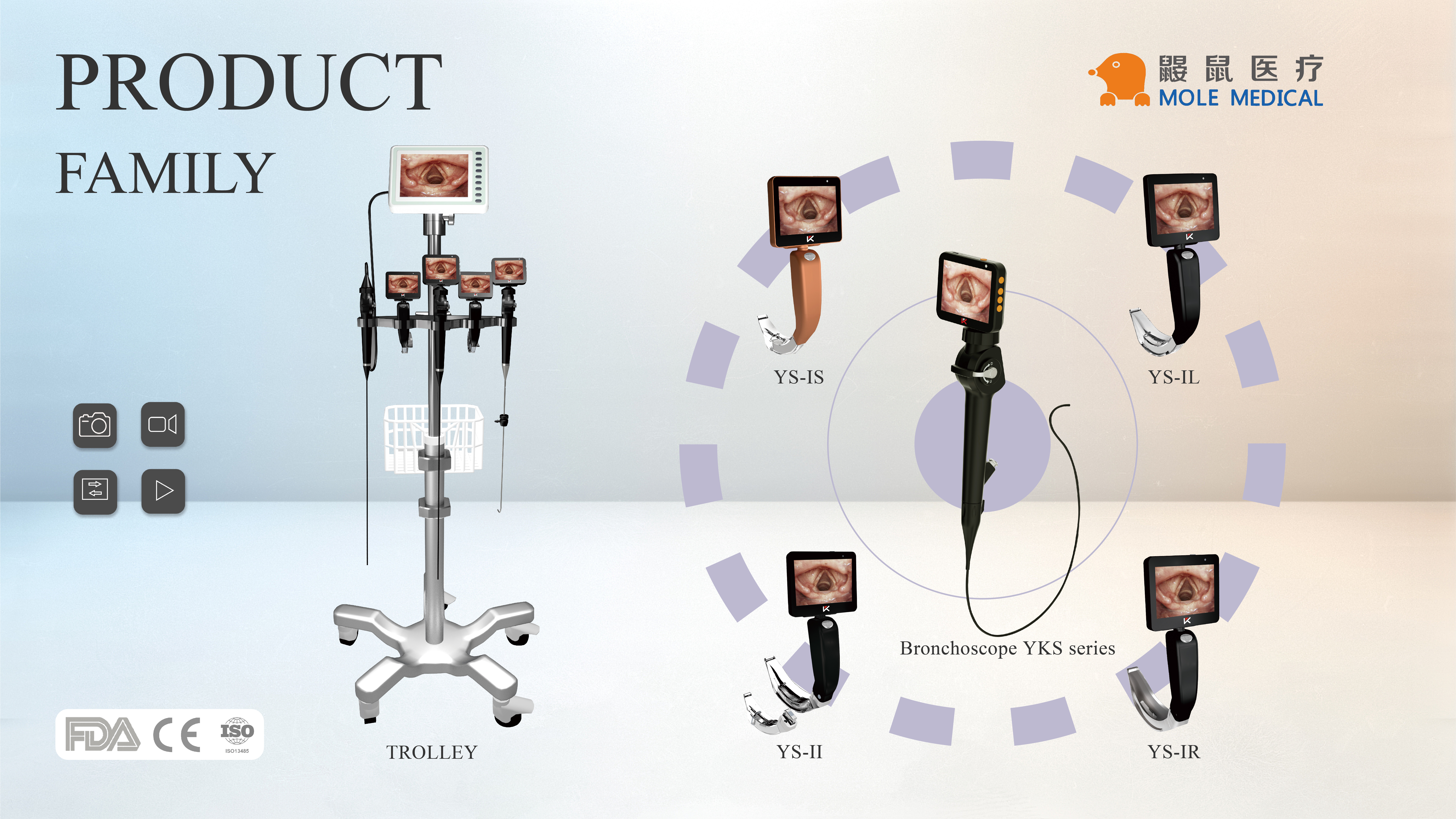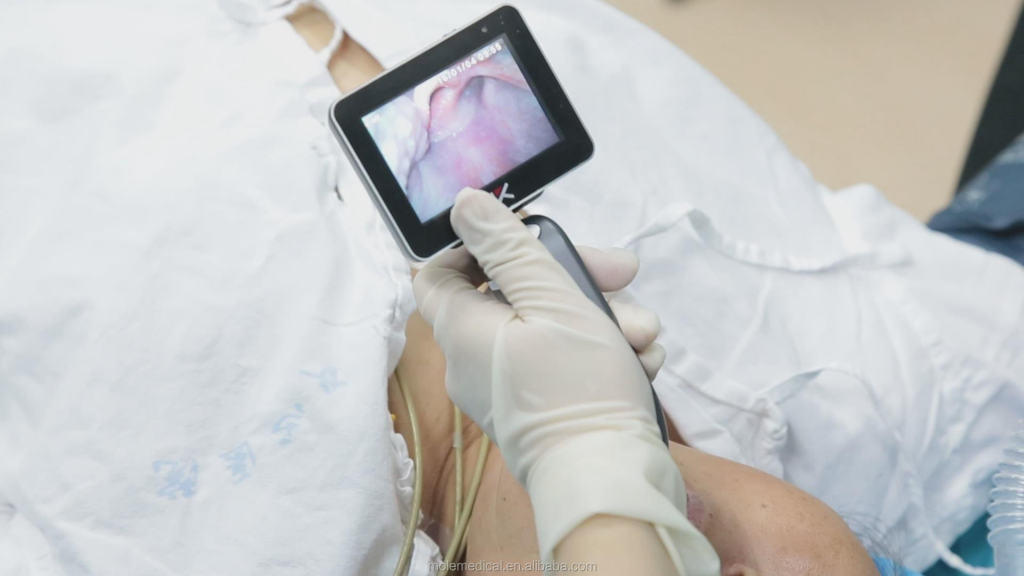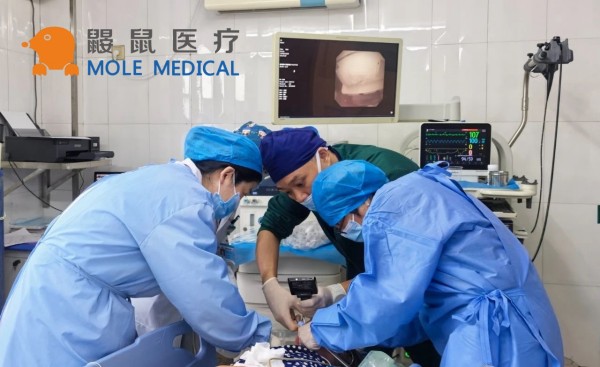Video Intubation Devices: Revolutionize Airway Management
Dec 21, 2023
The use of video intubation devices has transformed the field of advanced airway management. Intubation technology has come a long way from traditional methods, and medical professionals are now turning to airway management devices that incorporate video-guided intubation.
The benefits of video intubation devices are many. First, they allow for greater visualization and control during procedures, resulting in improved patient outcomes. Second, these devices facilitate intubation procedures, providing a safer and more effective approach to airway management.
The growing popularity of video intubation devices has led to an increasing demand for airway management devices that incorporate this technology. Medical professionals who specialize in advanced airway management are seeking out these innovative tools to enhance their practice.
Key Takeaways:
- Video intubation devices are revolutionizing the field of advanced airway management.
- These devices offer improved visualization and control during procedures.
- Video-guided intubation results in safer and more effective airway management.
- Increased demand for airway management devices incorporating this technology.
- Medical professionals seek out video intubation tools to enhance their practice.
Understanding Video Intubation Devices
Video intubation devices are a type of intubation equipment that incorporate video laryngoscope technology to assist medical professionals during intubation procedures. These devices differ from traditional intubation equipment in that they include a camera and a monitor that provide a video-guided view of the patient’s airway, which helps to increase visibility and improve accuracy during the procedure.
The video laryngoscope is a key component of video intubation devices. It consists of a handle with a camera and a light source that is inserted into the patient’s mouth to capture an image of their airway. The camera then transmits the real-time video feed to a monitor, allowing medical professionals to see a clear, magnified view of the airway.
Using a video laryngoscope during intubation can be particularly helpful in cases where patients have difficult airways, such as those with limited mouth opening or abnormal anatomy. Additionally, video-assisted intubation with the help of video intubation devices has been shown to reduce the incidence of esophageal intubation and improve overall success rates, compared to traditional direct laryngoscopy techniques.
Advantages of Video-Assisted Intubation

Video-assisted intubation offers significant advantages over traditional methods of airway management. Video intubation devices have revolutionized the way clinicians perform intubation procedures, improving patient outcomes and safety.
With video-guided intubation, providers can visualize the airway and surrounding structures in real-time, making it easier to navigate and secure the endotracheal tube. This results in higher first-pass success rates and reduced procedure time, minimizing the risk of complications and potential harm to the patient.
Moreover, video intubation devices are ideal for patients with difficult airways, such as those with anatomical obstructions or limited mouth opening. With a range of video laryngoscopes available, providers can select the most appropriate device for each patient, ensuring optimal visualization and intubation.
Video-assisted intubation also has economic benefits, as it reduces the need for additional intubation attempts, which can prolong hospital stays and lead to increased healthcare costs. As a result, the intubation devices market is growing as more healthcare providers transition to video-guided intubation for advanced airway management.
In summary, video-assisted intubation is revolutionizing the field of airway management and providing significant benefits for both patients and healthcare providers. With the growing availability of video intubation devices and advancements in technology, the future of intubation looks promising.
The Future of Intubation Technology
Intubation technology has come a long way in recent years, and video intubation devices represent a significant advancement in airway management devices. As technology continues to evolve, there are bound to be many exciting innovations on the horizon.
One area where we can expect to see continued progress is in the development of even more compact and portable intubation devices. These devices will make it easier for medical professionals to perform intubations in a variety of settings, from emergency rooms to ambulances and even in the field.
Another exciting area of development is in the use of artificial intelligence (AI) in intubation technology. By incorporating AI into video intubation device, it will be possible to enhance their functionality and provide even more accurate and reliable airway management.
Finally, we can also expect to see further refinements in video-guided intubation techniques. As medical professionals become more familiar with these devices, they will be better able to identify ways to optimize their use and improve outcomes for patients.
The Role of Infrared Technology
One emerging trend in intubation technology is the integration of infrared imaging. This could allow medical professionals to better visualize the airway during intubation procedures, making the process safer and more accurate.
Currently, infrared technology is being used in conjunction with video intubation device in a variety of medical settings. This innovative approach to intubation is likely to become even more widespread in the future, as doctors and nurses seek out ways to optimize airway management procedures.
The Importance of Continuous Monitoring
As intubation technology continues to evolve, we can also expect to see increased emphasis on continuous monitoring of patients during and after the intubation procedure. This will likely involve the use of advanced sensors that are able to provide real-time feedback on a patient’s vital signs and other key metrics.
Continuous monitoring can help to reduce the risk of complications during and after intubation procedures, making it an essential component of modern airway management devices.
Overall, the future of intubation technology looks incredibly promising, with more advanced and innovative devices and techniques set to revolutionize airway management in the years to come.
Conclusion
In conclusion, video intubation devices are emerging as a game-changer in advanced airway management. Video-guided intubation offers numerous advantages over traditional methods, including improved patient safety and reduced complications during intubation procedures. The growing popularity of video-assisted intubation has also led to a surge in the intubation device market, with the technology constantly evolving to meet the needs of medical professionals.
As highlighted in this article, the future of intubation technology looks promising, with video intubations devices at the forefront of innovations in airway management devices. It is clear that these devices are transforming how we approach airway management and will continue to do so in the coming years.
Therefore, healthcare professionals must stay up-to-date with the latest advancements in video-intubation technology to optimize patient care and safety. It is only a matter of time before video-guided intubation becomes the norm, and airway management devices become an essential component of every medical facility.
Categories
Latest Articles

Disposable Nephroscopes: Redefining Safety & Efficiency in Urology
Introduction The shift towards minimally invasive urological surgery has found a pivotal ally: the disposable nephroscope. As traditional reusable scopes grapple with persistent biofilm contamination risks and soaring sterilization costs, the global medical community is rapidly adopting single-use solutions. This article analyzes the clinical value, technological evolution, and dynamic innovation landscape driving this transformative shift. ... Read more

Disposable Video Laryngoscope Blades: The Ultimate Solution for Preventing Cross-Contamination
In the operating room, as the cold light of a video laryngoscope illuminates a patient’s airway, an age-old medical challenge is being redefined: How can life-saving instruments avoid becoming vectors of infection? Jiangsu MoleMedical drives an innovative safety revolution—replacing reusable devices with single-use, sterile laryngoscope blades that create a pure barrier for critical airways. Traditional video ... Read more
-2.jpg)
FDA & CE Approved Video Laryngoscope: What Makes It Stand Out?
Introduction In high-pressure emergencies and precision-driven operating rooms, video laryngoscopy is revolutionizing airway management. Mole Medical’s FDA and CE-certified technology replaces tactile-dependent “blind intubation” with real-time visual navigation – enhancing safety, accuracy, and clinical outcomes worldwide. Why Certification Matters Mole Medical’s dual certifications validate its global compliance and performance: FDA Clearance: Rigorous validation of safety/efficacy ... Read more

Mole Medical Showcases Advanced Endoscopy Solutions at CMEF Autumn 2025, Driving Global Partnerships
Guangzhou, China – September 26-29, 2025 – The 92nd China International Medical Equipment Fair (CMEF Autumn) concluded successfully on September 29th at the Canton Fair Complex in Guangzhou. Mole Medical Technology Co., Ltd. (Mole Medical) made a significant impact at the event, drawing global medical professionals and partners to its booth (Hall 2.1, Stand Q24) ... Read more

How to Use Disposable Ureteroscopes Safely and Efficiently
In the field of urology, the application of disposable electronic ureteral-kidney pelvis endoscopy catheters is leading the technological innovation in minimally invasive surgeries. According to the 2024 multi-center research data from China’s urology department, among the over 5,000 surgeries included, the patient group using disposable catheters performed significantly better in key indicators such as operation ... Read more



